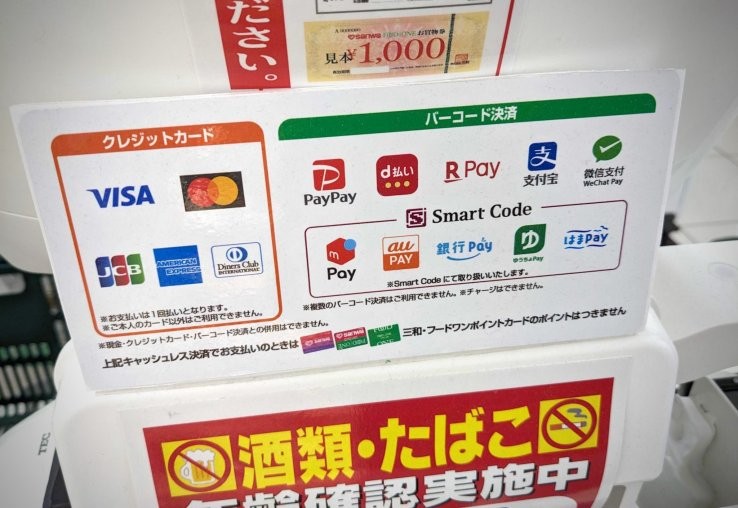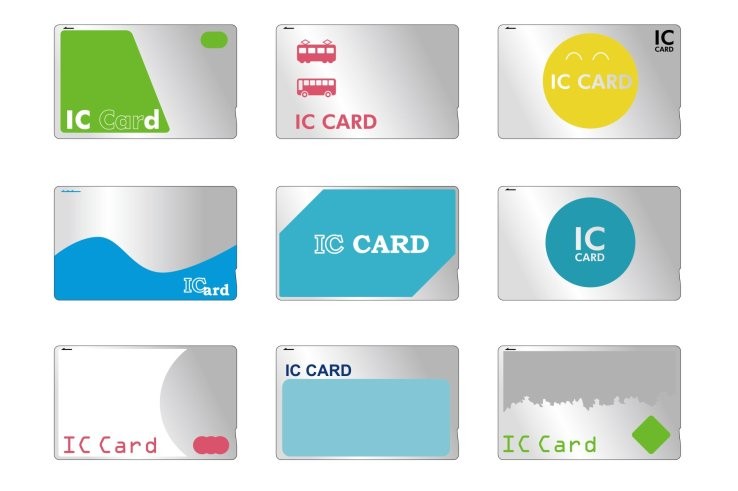Navigating finances abroad can be tricky. Should I Exchange Money Before I Travel To Japan? Yes, exchanging some money before traveling to Japan is generally a good idea to cover initial expenses and smaller establishments that primarily use cash. TRAVELS.EDU.VN recommends familiarizing yourself with the local currency and payment landscape for a smooth and enjoyable trip. Let’s explore how to make the most of your Yen with payment options like IC cards, digital payments, and of course, cash.
1. Understanding the Japanese Yen (JPY)
The Japanese Yen (¥, JPY) is the official currency of Japan, essential for transactions throughout the country. Knowing its nuances can enhance your travel experience.
1.1. Yen Denominations
The Japanese Yen comes in various denominations, including six coins and four banknotes. Recognizing each will help you manage cash effectively.
| Coin | Details |
|---|---|
| 1 yen (ichi-en) | Light silver color, smooth edges, made of 100% aluminum. It features a young tree symbolizing Japan’s growth. |
| 5 yen (go-en) | Gold color, smooth edges, with a hole in the middle. It depicts a rice stalk, gear, and sea, representing agriculture, industries, and fisheries. |
| 10 yen (jū-en) | Bronze color (95% copper), smooth edges. It features the Byodo-in Phoenix Hall and an evergreen tree. |
| 50 yen (gojū-en) | Silver color, ridged edges, with a hole in the middle. Three chrysanthemums are depicted on the front. |
| 100 yen (hyaku-en) | Silver color with ridged edges. The current design depicts sakura blossoms. |
| 500 yen (gohyaku-en) | Light gold color, ridged edges. The largest and heaviest coin, featuring the paulownia. It also has bamboo and tachibana leaves on the back. Tilting the coin reveals “500円” as a hologram. Often called “one coin” for value-for-money items, according to the Japan National Tourism Organization. |
| Banknote | Details |
|---|---|
| 1000 yen (sen-en) | Features Kitasato Shibasaburō and The Great Wave off Kanagawa. Kitasato was a pioneer in Japanese medicine, and The Great Wave is a famous ukiyo-e artwork. |
| 2000 yen (ni-sen-en) | Issued in 2000 to commemorate the millennium and the G8 Summit in Okinawa. It features the Shurei-mon gate of Shuri Castle and a scene from the Tale of Genji, making it a novelty due to its limited availability. |
| 5000 yen (go-sen-en) | Features Tsuda Umeko and wisteria flowers. Umeko was a pioneer in women’s education, founding Tsuda University. |
| 10,000 yen (ichi-man-en) | Features Eiichi Shibusawa and the Tokyo Station Marunouchi Building. Shibusawa was the ‘father of capitalism’ in Japan, and the Marunouchi Building is an iconic symbol of Tokyo, dating back to 1914. |
1.2. Pronunciation of “Yen”
In Japan, “yen” is pronounced “en“. You’ll often see it written with the kanji 円 in daily use.
2. Methods of Payment in Japan
Japan’s payment landscape is evolving, with cash, credit cards, IC cards, and digital payments each playing a role.
2.1. Cash: Still a Key Player
Although digital payment methods are gaining popularity, Japan remains a predominantly cash-based society, especially in rural areas and small businesses.
- Keep small denominations (10 and 100 yen coins, 1,000 yen notes) for ticket and vending machines, as they may not accept larger bills.
- While carrying cash might feel risky, Japan has low crime rates. However, be mindful of losing money by dropping it.
- Many supermarkets and convenience stores have kiosks to deposit large amounts of coins easily.
 Japanese Yen coins and banknotes
Japanese Yen coins and banknotes
2.2. Credit and Debit Cards: Increasing Acceptance
Credit and debit cards are increasingly accepted in Japan, but it’s wise to check in advance, especially at smaller establishments.
- Always have sufficient cash as a backup, even if you plan to use credit cards primarily.
- Most credit card companies charge a surcharge (1–3%) for foreign-issued cards. Consider using a Wise card to avoid these fees and get real exchange rates.
- MasterCard, Visa, and JCB are widely accepted, followed by American Express and Diner’s Club.
- Credit card readers typically support swipe, insert, or contactless payment.
2.3. IC Travel Cards: Convenient for Transit and More
IC cards like Suica and PASMO are popular in major cities for train and bus fares, and can also be used for payments at vending machines, kiosks, shops, cafes, and restaurants.
- The main IC operators across Japan include Icoca, Pitapa, Toica, Manaca, Kitaca, Suogca, Nimoca, and Hayakaken.
- These cards are interoperable within their respective networks.
- Digital versions of Suica and Pasmo are available on iPhone and Android via official apps for easy contactless payment.
 Man holding an IC Travel Card
Man holding an IC Travel Card
2.4. Digital Payments: For Residents
If you have a Japanese phone number and residency, local payment apps like PayPay, MerPay, and Rakuten Pay are available. These apps can be topped up at ATMs or via a bank account, credit card, or mobile service provider. Payments are made via contactless terminals or QR codes.
3. Should I Exchange Money Before Traveling To Japan?
Exchanging some money before traveling can be advantageous, while using local ATMs and currency exchange services offer flexibility.
3.1. Advantages of Exchanging Money Before Traveling
- Immediate Access to Cash: Having yen upon arrival ensures you can immediately cover transportation, meals, and other essential expenses.
- Peace of Mind: Knowing you have local currency can reduce stress, especially when arriving late or in unfamiliar areas.
- Better Rates (Potentially): You might find better exchange rates at your local bank or credit union compared to airport kiosks, giving you more yen for your dollar.
3.2. When to Exchange Currency
Consider these scenarios for when to exchange currency:
- First-Time Travelers: If you’re unfamiliar with Japan, having yen on hand simplifies initial transactions.
- Travel to Rural Areas: Smaller towns may not widely accept credit cards, making cash essential.
- Budget Travelers: Exchanging beforehand can help you stick to your budget by knowing exactly how much you have to spend.
3.3. Disadvantages of Exchanging Too Much
- Poor Exchange Rates: Currency exchange services at airports often offer unfavorable rates.
- Unused Currency: Exchanging too much can leave you with leftover yen, which you may lose money on when converting back.
- Safety Concerns: Carrying large amounts of cash can make you a target for theft, despite Japan’s low crime rate.
3.4. Alternative Methods of Obtaining Yen
- ATMs: ATMs are a reliable way to withdraw yen upon arrival. Japan Post and 7-Eleven ATMs commonly accept foreign-issued cards, providing convenient access to cash.
- Currency Exchange Services: Banks and money changers (like Travelex) at airports and in major cities can exchange currencies. Banks usually operate from 9 am to 3 pm on weekdays. While hotels and department stores may offer this service, they often charge extra fees with less favorable rates.
3.5. Traveler’s Checks
While less common, traveler’s checks can be useful due to the limited number of ATMs that support foreign-issued cards. They often carry better rates than money changers and ATMs, and are accepted by leading banks, hotels, ryokan, and stores in major cities. However, avoid using checks drawn from foreign banks, as many places charge extra fees or do not accept them.
3.6. Wise: A Convenient Option
Wise (formerly TransferWise) offers an economical, quick, and easy way to transfer funds to a local account or access currency during your trip. With the Wise app and card, you can enjoy more spending flexibility in Japan, competitive exchange rates, currency alerts, and auto-conversion features.
4. Etiquette and Tips for Handling Money in Japan
Navigating money matters in Japan involves understanding a few cultural nuances.
4.1. No Tipping
Tipping is not customary in Japan. Attempting to leave a tip at a restaurant or for a taxi driver will likely result in the money being returned. If you wish to offer a gratuity, such as to a maid at a ryokan or a tour guide, place the money in an envelope and present it in person.
4.2. Handling Cash with Care
Most establishments provide a small tray for placing money instead of handing it directly to the cashier. This practice is also common when receiving small change.
4.3. Consumption Tax
Be aware that prices displayed may not always include consumption tax. The current consumption tax rate is 10%, but cafes, restaurants, and businesses serving food for takeout may charge 8%.
4.4. Best Time to Exchange
Generally, exchanging yen in Japan offers better exchange rates and lower commissions compared to exchanging in your home country. You’ll typically find more favorable rates away from major airports.
5. How to Exchange Money in Japan
When you arrive in Japan, several options are available for exchanging your currency.
5.1. Airport Exchange Services
Airports such as Narita (NRT) and Haneda (HND) offer currency exchange services, often available 24/7. While convenient, these tend to have less favorable exchange rates and higher fees.
- Tip: Exchange only a small amount at the airport to cover immediate expenses.
5.2. Banks
Major banks like MUFG, SMBC, and Mizuho provide currency exchange services. Banks generally offer better exchange rates than airports but have limited operating hours (typically 9:00 AM to 3:00 PM on weekdays).
- Tip: Check the bank’s exchange rates online before visiting to ensure you get a fair deal.
5.3. Post Offices
Japan Post offices also offer currency exchange services and are widely accessible throughout the country. Look for the “International Currency Exchange” sign.
- Tip: Japan Post ATMs are reliable for withdrawing cash using international cards.
5.4. Currency Exchange Kiosks
Currency exchange kiosks are available in tourist areas and shopping districts, offering extended hours and convenience. However, their exchange rates might not be as competitive as banks.
- Tip: Compare rates at different kiosks before making a transaction.
6. Planning Your Trip to Japan with TRAVELS.EDU.VN
To ensure a seamless and enjoyable trip to Japan, TRAVELS.EDU.VN is here to assist you with comprehensive travel services.
6.1. Tailored Travel Packages
TRAVELS.EDU.VN offers customized travel packages to suit your preferences and budget. Whether you’re looking for a romantic getaway, a family vacation, or an adventure with friends, our packages cover a range of experiences.
- Romantic Escapes: Ideal for couples seeking memorable experiences, our packages include luxury accommodations, fine dining, and cultural excursions.
- Family Adventures: Designed to cater to families, these packages feature kid-friendly activities, spacious accommodations, and convenient transportation options.
- Group Tours: Perfect for friends, our group tours offer a mix of exploration, leisure, and fun activities.
6.2. Exclusive Napa Valley Experiences
Enhance your trip with exclusive access to Napa Valley’s top attractions and hidden gems. Our services include private wine tastings, gourmet dining experiences, and guided tours led by local experts.
- Private Wine Tastings: Enjoy personalized wine tastings at renowned Napa Valley vineyards, tailored to your preferences.
- Gourmet Dining: Savor exquisite cuisine at top-rated restaurants, with menus crafted by award-winning chefs.
- Guided Tours: Discover Napa Valley’s scenic beauty and cultural landmarks with our expert-led tours.
6.3. Stress-Free Planning
TRAVELS.EDU.VN simplifies travel planning by handling all the details, from itinerary creation to booking accommodations and activities.
- Customized Itineraries: We create personalized itineraries based on your interests, ensuring a memorable and fulfilling travel experience.
- Accommodation Booking: We secure reservations at top-rated hotels, resorts, and vacation rentals, catering to your budget and preferences.
- Activity and Tour Booking: We arrange tours, activities, and experiences, ensuring you get the most out of your trip.
6.4. Up-to-Date Travel Information
Stay informed with the latest travel guidelines, currency exchange rates, and local insights. TRAVELS.EDU.VN provides essential information to help you navigate your trip with confidence.
- Real-Time Updates: Get instant updates on travel advisories, health guidelines, and local regulations.
- Currency Conversion Tools: Access our currency conversion tools to stay informed about exchange rates.
- Local Tips: Benefit from insider tips and recommendations from our local experts.
7. FAQs About Money Exchange for Japan Travel
Here are some frequently asked questions to help you navigate currency exchange for your trip to Japan.
1. Is it better to exchange money before or after arriving in Japan?
It’s generally better to exchange a small amount before arriving for immediate expenses, then exchange more in Japan for potentially better rates.
2. Where can I find the best exchange rates in Japan?
Banks and Japan Post offices typically offer better exchange rates than airports or currency exchange kiosks.
3. Are credit cards widely accepted in Japan?
Credit cards are becoming more widely accepted, especially in major cities, but cash is still essential in rural areas and smaller establishments.
4. Should I carry a lot of cash in Japan?
While Japan is generally safe, it’s wise to carry a reasonable amount of cash for transactions where credit cards aren’t accepted, but avoid carrying excessive amounts.
5. What should I do with leftover yen after my trip?
You can exchange it back at the airport before leaving or keep it for future trips if you plan to return.
6. Are there ATMs that accept foreign cards in Japan?
Yes, Japan Post and 7-Eleven ATMs are known to accept foreign cards.
7. Can I use digital payment apps like Apple Pay or Google Pay in Japan?
Some stores accept Apple Pay and Google Pay, but it’s not as widespread as in other countries.
8. Is tipping customary in Japan?
No, tipping is not customary in Japan, and it’s often considered impolite.
9. What is the consumption tax rate in Japan?
The consumption tax rate is currently 10%, but it may be 8% for takeout food.
10. How can TRAVELS.EDU.VN help with my Japan trip?
TRAVELS.EDU.VN offers tailored travel packages, exclusive experiences, and stress-free planning services to ensure a memorable trip.
8. Contact TRAVELS.EDU.VN Today
Ready to plan your dream trip to Napa Valley? Contact TRAVELS.EDU.VN today to learn more about our travel packages and exclusive experiences. Let us take care of the details so you can focus on creating unforgettable memories.
- Address: 123 Main St, Napa, CA 94559, United States
- WhatsApp: +1 (707) 257-5400
- Website: TRAVELS.EDU.VN
Don’t miss out on the adventure of a lifetime. Contact us now and let travels.edu.vn turn your travel dreams into reality!

